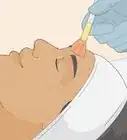This article was medically reviewed by Kate Holcomb, MD and by wikiHow staff writer, Hannah Madden. Dr. Kate Zibilich Holcomb is a Board Certified Dermatologist and the Founder of Pure Dermatology. She has over 15 years of experience in the field and specializes in cosmetic dermatology. Dr. Holcomb earned an MS in Public Health and Parasitology from The Tulane University School of Public Health and Tropical Medicine and an MD from Tulane University School of Medicine. She also completed her residency in dermatology as Chief Resident at Saint Luke’s-Roosevelt Hospital Mount Sinai. Dr. Holcomb is a member of the American Academy of Dermatology, American Society of Dermatologic Surgeons, American Acne and Rosacea Society, Skin of Color Society, North American Contact Dermatitis Society, Louisiana Dermatological Society, and Women’s Dermatologic Society.
There are 15 references cited in this article, which can be found at the bottom of the page.
This article has been viewed 344,216 times.
Want glowing, clear skin free of blemishes and dark spots? You’re not alone—most of us aim to get spotless skin (and fast!). In this article, we’ll give you some home remedies that you can use right now, as well as some good habits to get into for spotless skin in no time.
Steps
Natural Remedies for Clear Skin
-
1Use lemon juice to lighten dark marks. Lemon juice is a natural bleaching agent, and the vitamin C in it is great for your skin. Simply squeeze a lemon into a bowl, then mix it with equal parts water. Dip a cotton ball into the mixture and dab it onto your dark spots, then let it sit for 20 minutes. Rinse your skin with cool water.[1]
- Lemon juice can be very drying for your skin, so be sure to moisturize afterwards.
- Try lightening your skin with lemon juice 2 to 3 times per week.
-
2Brighten your skin with buttermilk. The lactic acid in buttermilk can brighten your skin. Dab a little bit of buttermilk onto a cotton ball, then pat the buttermilk onto any dark marks on your face. Wait for 20 minutes, then rinse the buttermilk off.[2]
- Try doing this once a day until you see results.
Advertisement -
3Apply products with honey for glowing skin. Honey contains amino acids and vitamins that are great for your skin.[3] Look for products like lip ointments, cleansing milks, hydrating creams, and lotions that contain up to 70% honey, then use those products every day.
- Some people swear by using honey directly on their face as a skin treatment. You can absolutely spread a thin layer of honey on your face once a day and then rinse it off, but this home remedy has no scientific backing.
- Studies have also found that green tea extract is a great ingredient. It can help brighten skin and even out your skin tone.[4]
-
4Use tea tree oil gel to treat acne. Tea tree oil is a natural essential oil that helps target acne and clogged pores. Look for a gel that contains 5% tea tree oil, then use it on your face once a day.[5]
- Some people have side effects like redness, itching, burning, and dryness. These side effects will get better as you continue using tea tree oil.
- Always use a product with diluted tea tree oil instead of putting 100% undiluted tea tree oil on your skin. Undiluted tea tree oil can cause allergic reactions and skin irritation.
-
5Try aloe gel to treat acne and dark marks. Aloe vera gel is a natural product derived from the aloe plant. Studies show that using it once in the morning and once at night can help the treatment of acne, especially in conjunction with other prescription acne treatments.[6] Try applying aloe vera gel to your skin twice a day, and focus on any acne spots or dark marks.
- Aloe vera gel can also help treat other skin conditions, like psoriasis, wounds, and burns.
-
6Make a turmeric face mask to reduce spots and inflammation. Turmeric has been an ingredient in skincare for decades now. You can make your own turmeric face mask by mixing 1 heaping spoonful of Greek yogurt, 1/4 tsp (1.4 g) of turmeric powder, and 1/2 tsp (2.8 g) of honey. Slather the mixture onto your face and let it sit for about 5 minutes.[7]
- To see fast results, try using the face mask every day for 5 to 7 days.
- If your skin gets red or irritated, rinse the mask off right away and stop using it.
Daily Skincare Routine
-
1Pick products that are right for your skin type. In general, there are 3 main skin types: oily, dry, or combination (both oily and dry). Figure out your skin type by pressing a tissue against your face: if you have oily skin, the tissue might be greasy or oily. If you have dry skin, the tissue will have small flakes on it. And if you see both oil and flakes, you probably have combination skin.[8]
- Products for oily skin: mattifying face wash, oil control SPF, and light, non-greasy moisturizers.
- Products for dry skin: hydrating face wash, thick and creamy moisturizers, and hydrating SPF.
- Products for combination skin: mild cleanser, light SPF, and 2 moisturizers: one light one (for your oily spots), and one thick one (for your dry spots).
-
2Wash your face with a gentle cleanser twice a day. Pick a mild cleanser that will clean your skin without stripping away the natural oils on your face. Use lukewarm water and gently rub the cleanser into your skin, then rinse it off. Pat your face dry with a towel to remove dirt, oil, and grime.[9]
- Try to wash your face once in the morning and once at night.
- To avoid clogged pores and acne, remember to remove your makeup before bed. Using makeup products that say “non-comedogenic” can also help.
-
3Apply a moisturizer twice a day. Moisturizers hydrate your skin and prevent any dry flakes on your face. Pick a moisturizer that’s right for your skin type, and spread a quarter-sized amount onto your finger tips. Gently rub the moisturizer into your skin after you wash your face to lock in hydration.[10]
- Moisturizer is important for everyone, even if you have oily skin. Your skin may be producing an excess of oil to combat your skin’s dryness, and moisturizer can help stop that.
-
4Exfoliate once a week. Exfoliation removes dead skin cells that can clog your pores and cause acne. Once a week, use either a physical exfoliant (good for oily skin) or a chemical exfoliant (good for dry skin, combination skin, and sensitive skin). Rub the exfoliant on just like your normal face wash, and use small, circular motions to cleanse your skin. Then, rinse it off and pat your skin dry.[11]
- Exfoliating can dry out your skin, so limit it to once a week.
- Be sure to moisturize after you exfoliate, too.
-
5Put on sunscreen every day. UV rays are very harmful for your skin—too much sun can cause hyperpigmentation and even darken spots on your face. Before you leave the house, put on an SPF 30 or higher sunscreen to give your face some protection from the sun.[12]
- It may sound strange, but your skin can get damaged by UV rays even on cloudy days. Be sure to put on sunscreen every day, not just on sunny days.
- Stay away from tanning beds, since the concentrated UV rays are very bad for your skin. If you want to get tan, try using a self-tanning lotion instead.
-
6Treat age spots and dark marks with kojic acid. Kojic acid is an ingredient in skincare that targets pigmentation and age spots. Look for products like eye creams and moisturizers that contain this ingredient, then use it twice a day with the rest of your skincare routine.[13]
- When used for a long period of time, kojic acid may make your skin more susceptible to sunburn. Be sure to wear sunscreen every time you go outside to protect your skin.
- Vitamin C is another great ingredient that targets dark marks and helps even out skin tone.
Lifestyle Changes
-
1Keep your hands away from your face. Your hands are dirty, and touching your face can transfer acne-causing bacteria onto your skin. If you have a habit of touching your face, do your best to stop yourself every time you notice it.[14]
-
2Drink plenty of water every day. Staying hydrated from the inside out will keep your skin plump and moisturized. In general, men should aim for 15.5 cups (3.7 liters) of water per day, and women should aim for 11.5 cups (2.7 liters) per day.[15] Try to drink water every time you’re thirsty, and avoid dehydrating liquids like caffeine and alcohol.
- You can also supplement this with fruits and vegetables that contain lots of water, such as cucumbers, watermelons, lettuce, and celery.
-
3Eat a healthy diet. Try to have as many fruits, vegetables, and whole grains as you can. Fresh fruits and vegetables have key vitamins and minerals that will keep your skin healthy. Nuts, whole grains, and fatty fish also contain nutrients for good skin.[16]
- Avoid refined carbohydrates, like white bread or cakes, whole fat dairy products, and sweets. These foods are okay in moderation, but they tend to make your skin look and feel worse over time.
Expert Q&A
Did you know you can get expert answers for this article?
Unlock expert answers by supporting wikiHow
-
QuestionHow do dermatologists clear skin fast?
 Kate Holcomb, MDDr. Kate Zibilich Holcomb is a Board Certified Dermatologist and the Founder of Pure Dermatology. She has over 15 years of experience in the field and specializes in cosmetic dermatology. Dr. Holcomb earned an MS in Public Health and Parasitology from The Tulane University School of Public Health and Tropical Medicine and an MD from Tulane University School of Medicine. She also completed her residency in dermatology as Chief Resident at Saint Luke’s-Roosevelt Hospital Mount Sinai. Dr. Holcomb is a member of the American Academy of Dermatology, American Society of Dermatologic Surgeons, American Acne and Rosacea Society, Skin of Color Society, North American Contact Dermatitis Society, Louisiana Dermatological Society, and Women’s Dermatologic Society.
Kate Holcomb, MDDr. Kate Zibilich Holcomb is a Board Certified Dermatologist and the Founder of Pure Dermatology. She has over 15 years of experience in the field and specializes in cosmetic dermatology. Dr. Holcomb earned an MS in Public Health and Parasitology from The Tulane University School of Public Health and Tropical Medicine and an MD from Tulane University School of Medicine. She also completed her residency in dermatology as Chief Resident at Saint Luke’s-Roosevelt Hospital Mount Sinai. Dr. Holcomb is a member of the American Academy of Dermatology, American Society of Dermatologic Surgeons, American Acne and Rosacea Society, Skin of Color Society, North American Contact Dermatitis Society, Louisiana Dermatological Society, and Women’s Dermatologic Society.
Board Certified Dermatologist Well, there are numerous types of skin spots, and dermatologists have lots of different tools to treat them. We can use lasers and chemical peels, and depending on the dark spots, we can also use cryotherapy (liquid nitrogen freeze), electrocautery (tiny electric needle), and even cutting tools (curette).
Well, there are numerous types of skin spots, and dermatologists have lots of different tools to treat them. We can use lasers and chemical peels, and depending on the dark spots, we can also use cryotherapy (liquid nitrogen freeze), electrocautery (tiny electric needle), and even cutting tools (curette). -
QuestionI had oily skin, but after treatment it become dry. What should I do?
 Sarah Gehrke, RN, MSSarah Gehrke is a Registered Nurse and Licensed Massage Therapist in Texas. Sarah has over 10 years of experience teaching and practicing phlebotomy and intravenous (IV) therapy using physical, psychological, and emotional support. She received her Massage Therapist License from the Amarillo Massage Therapy Institute in 2008 and a M.S. in Nursing from the University of Phoenix in 2013.
Sarah Gehrke, RN, MSSarah Gehrke is a Registered Nurse and Licensed Massage Therapist in Texas. Sarah has over 10 years of experience teaching and practicing phlebotomy and intravenous (IV) therapy using physical, psychological, and emotional support. She received her Massage Therapist License from the Amarillo Massage Therapy Institute in 2008 and a M.S. in Nursing from the University of Phoenix in 2013.
Registered Nurse
-
QuestionHow do I get rid of black spots?
 Sarah Gehrke, RN, MSSarah Gehrke is a Registered Nurse and Licensed Massage Therapist in Texas. Sarah has over 10 years of experience teaching and practicing phlebotomy and intravenous (IV) therapy using physical, psychological, and emotional support. She received her Massage Therapist License from the Amarillo Massage Therapy Institute in 2008 and a M.S. in Nursing from the University of Phoenix in 2013.
Sarah Gehrke, RN, MSSarah Gehrke is a Registered Nurse and Licensed Massage Therapist in Texas. Sarah has over 10 years of experience teaching and practicing phlebotomy and intravenous (IV) therapy using physical, psychological, and emotional support. She received her Massage Therapist License from the Amarillo Massage Therapy Institute in 2008 and a M.S. in Nursing from the University of Phoenix in 2013.
Registered Nurse If the black spots you are referring to are blackheads from clogged pores, then you will need a cleansing and exfoliation regimen. Start with gentle exfoliation once a week. If your skin is not irritated, then you can move up to twice a week, and so on. Over-the-counter face washes with salicylic acid or benzoyl peroxide may be helpful as well!
If the black spots you are referring to are blackheads from clogged pores, then you will need a cleansing and exfoliation regimen. Start with gentle exfoliation once a week. If your skin is not irritated, then you can move up to twice a week, and so on. Over-the-counter face washes with salicylic acid or benzoyl peroxide may be helpful as well!
References
- ↑ https://www.aarp.org/entertainment/style-trends/info-2018/natural-remedies-age-spots-fd.html
- ↑ https://www.manipalhospitals.com/blog/7-natural-remedies-to-get-rid-of-dark-spots
- ↑ https://pubmed.ncbi.nlm.nih.gov/24305429/
- ↑ https://www.ncbi.nlm.nih.gov/pmc/articles/PMC5843359/
- ↑ https://www.nccih.nih.gov/health/tea-tree-oil
- ↑ https://www.ncbi.nlm.nih.gov/pmc/articles/PMC2763764/
- ↑ https://pubmed.ncbi.nlm.nih.gov/27213821/
- ↑ https://www.aad.org/public/everyday-care/skin-care-secrets/routine/healthier-looking-skin
- ↑ https://www.aad.org/public/everyday-care/skin-care-basics/care/face-washing-101
- ↑ https://www.health.harvard.edu/staying-healthy/moisturizers-do-they-work
- ↑ https://www.aad.org/public/everyday-care/skin-care-secrets/routine/safely-exfoliate-at-home
- ↑ https://www.aad.org/public/diseases/acne/skin-care/tips#causes
- ↑ https://my.clevelandclinic.org/health/articles/10980-understanding-the-ingredients-in-skin-care-products
- ↑ https://www.aad.org/public/diseases/acne/skin-care/tips#causes
- ↑ https://www.ncbi.nlm.nih.gov/pmc/articles/PMC4529263/
- ↑ https://www.helpguide.org/articles/healthy-eating/high-fiber-foods.htm
About This Article
The easiest way to improve your skin’s complexion is to wash your face twice a day to get rid of dirt and oils. Then, avoid touching your face throughout the day, which can push dirt and bacteria into your pores. Additionally, fight the urge to pop any pimples, since this could lead to redness and scarring. Along with good skincare habits, reduce the amount of dairy, white flour, and sugar you eat in order to prevent acne, sagging and premature aging. For more advice, including how get spotless skin by eating foods with the right vitamins and minerals, keep reading!
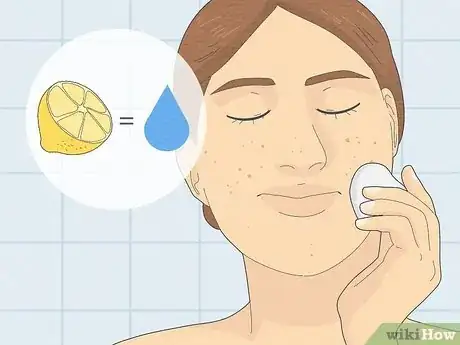
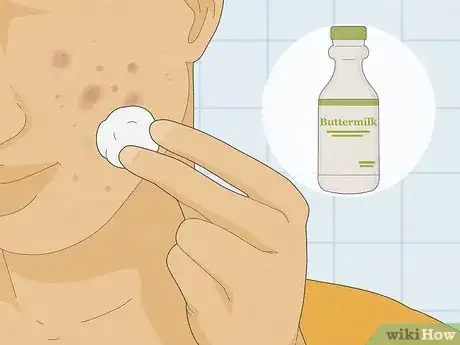
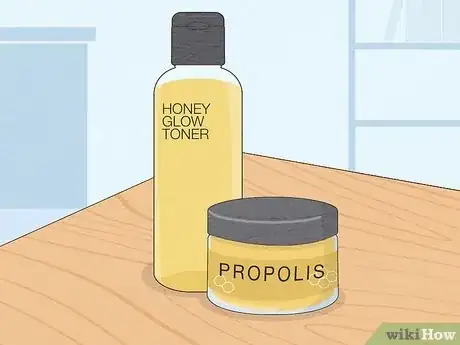
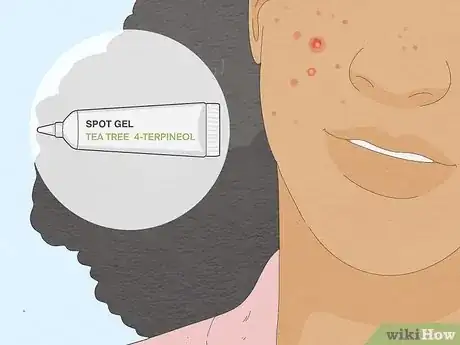
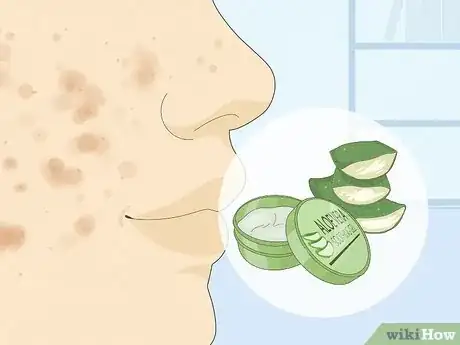
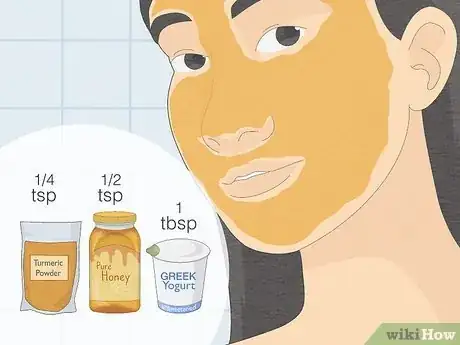
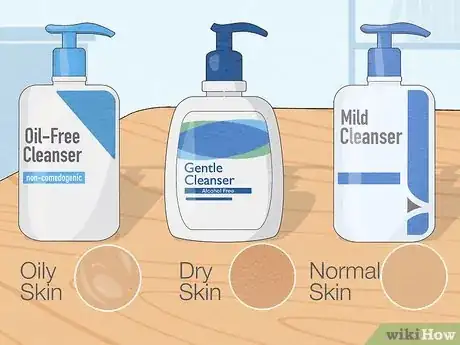
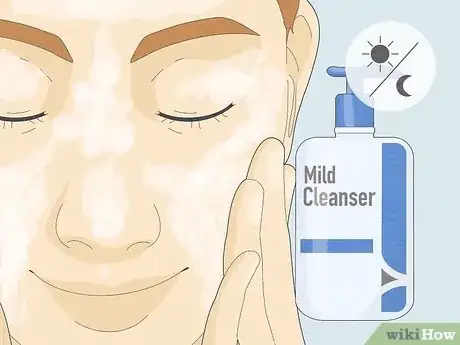
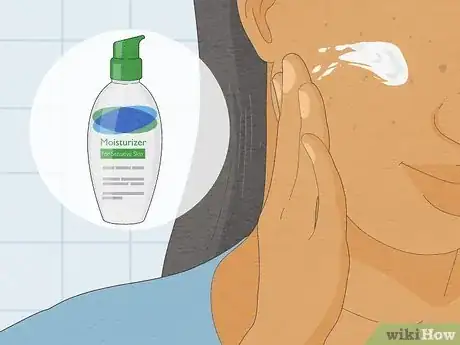
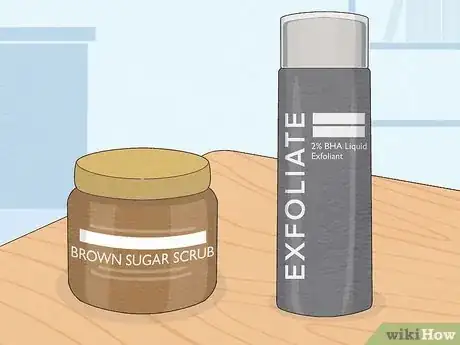
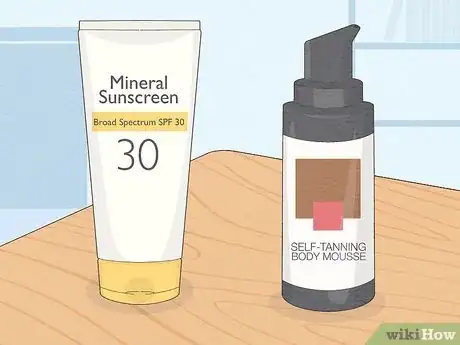
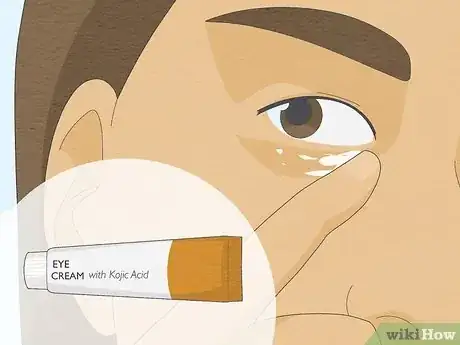
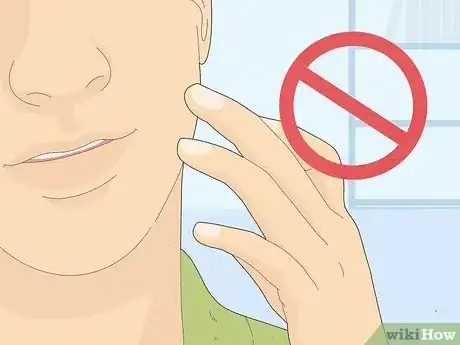
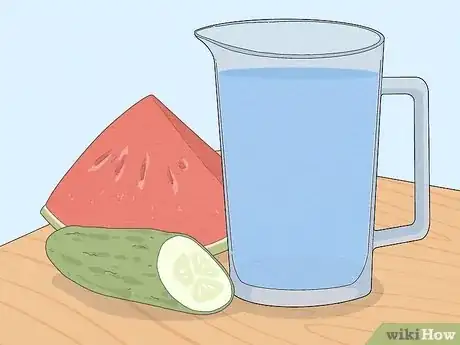
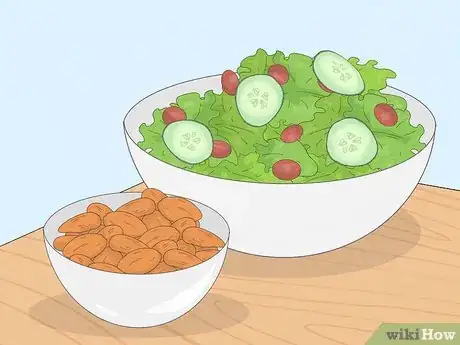


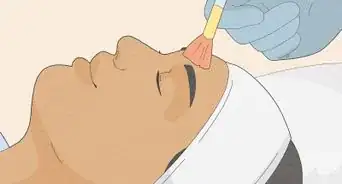

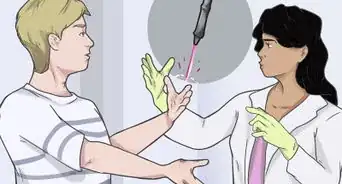
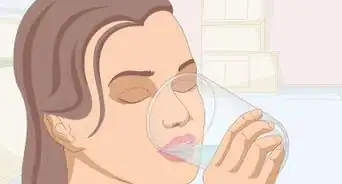
-Step-9-Version-2.webp)
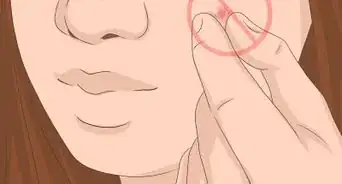
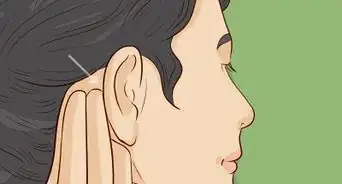
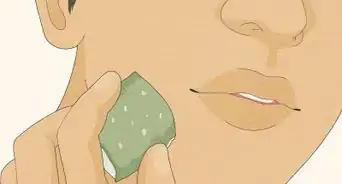

-Step-1.webp)











